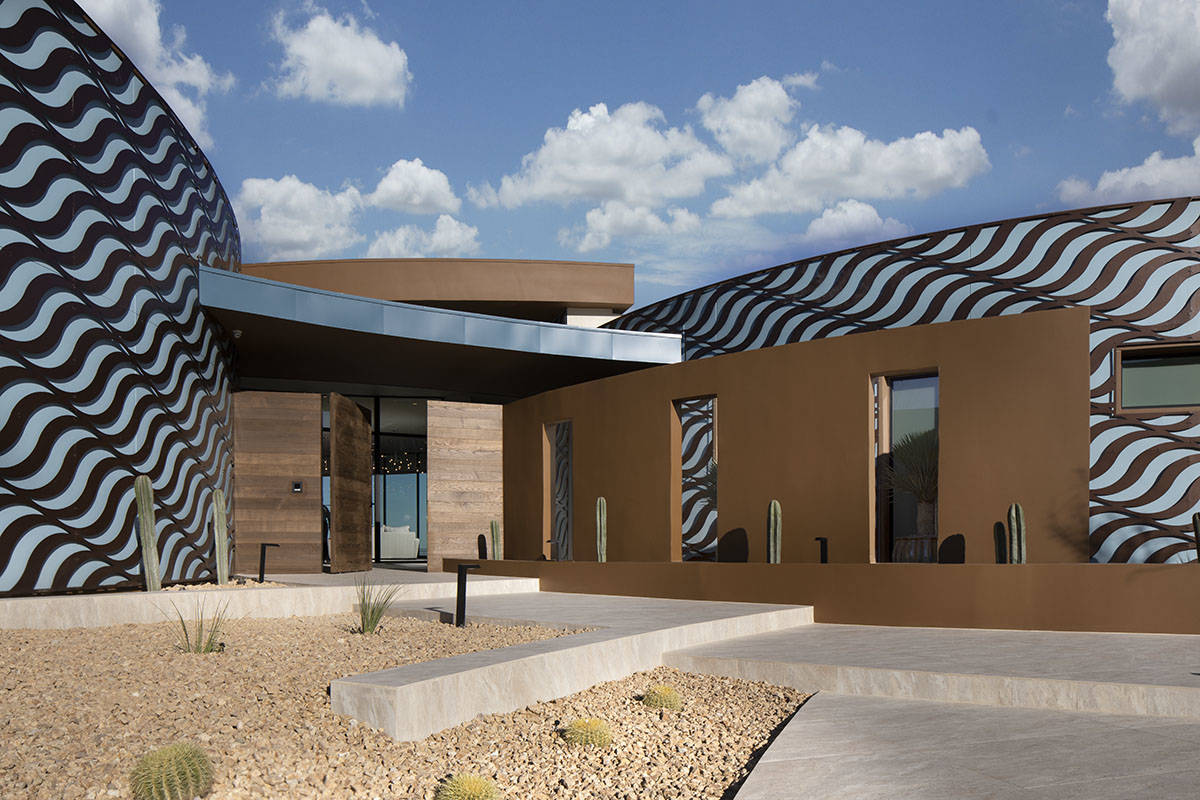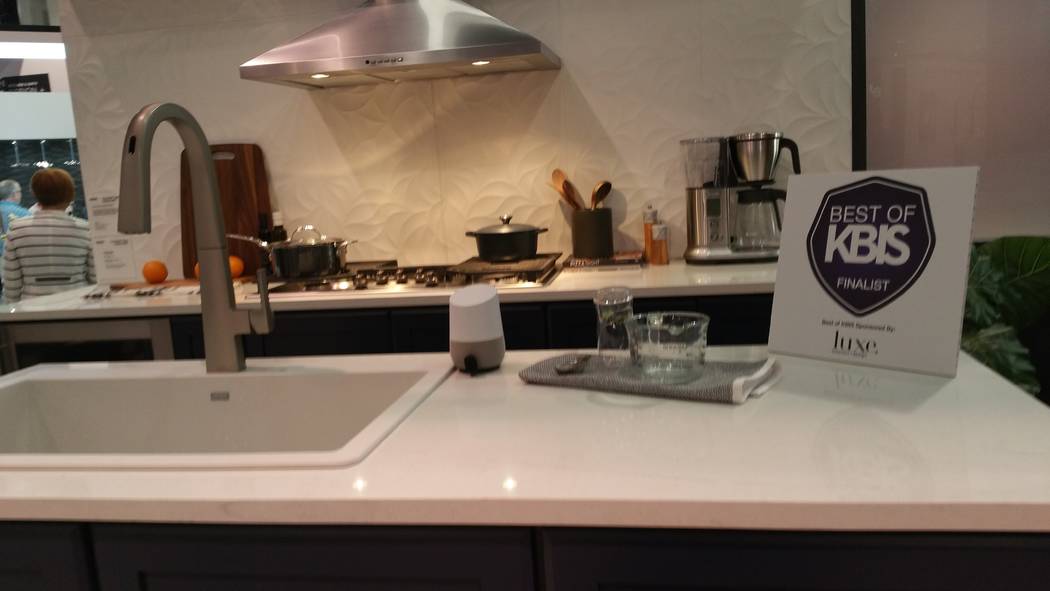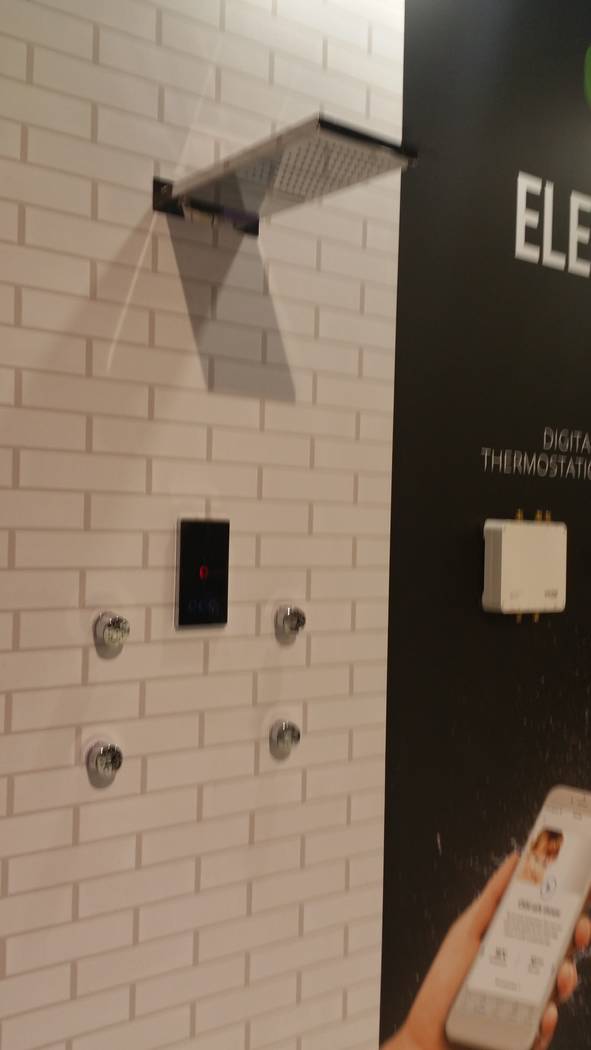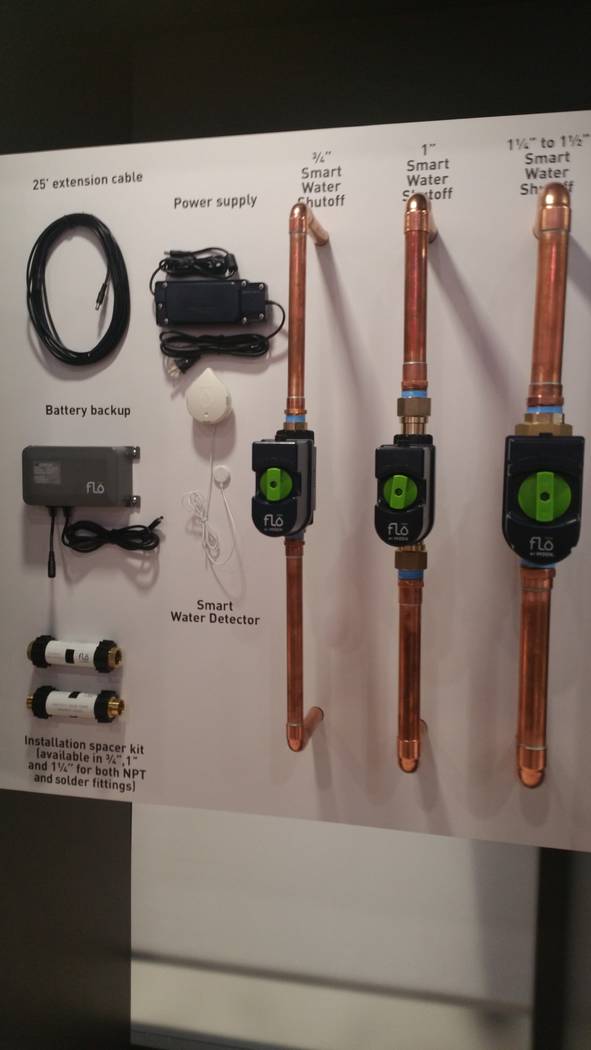Southern Nevada homebuilders challenged to use water efficiently
The availability of sufficient water resources to meet the needs of an expanding population will continue to be a challenge for the Southern Nevada Home Builders Association and its community partners over the next decade.
“Water is a natural resource. We’ve got to protect it,” said Nat Hodgson, the association’s CEO. “Our association has made great strides over the last 14 years to implement indoor plumbing and water-efficiency solutions. We have literally squeezed water out of a turnip. Now, we are looking at ways to curb outside water usage,” Hodgson said.
“Engaging landscape architects for park design, adhering to turf limits with the Las Vegas Valley Water District and generally doing things that don’t require irrigation are all part of development and planning,” said Brian Walsh, president of the association’s board of directors, during his 2020 installation speech.
“We’ve been lucky on rain recently, have seen a good snowpack, but it’s not something we don’t want to become complacent about. Our future depends on it,” Walsh said.
Most new homes built in this region connect to a water distribution system that spans 6,500 miles of pipeline. Available water resources must meet the needs of more than 2 million residents and Las Vegas tourists within the management territory of the Southern Nevada Water Authority. Because of the COVID-19 shutdown of the Strip and downtown Las Vegas, those tourist numbers will be zeroed out for at least a month. Still, water resources are a long-term concern.
Although the Las Vegas Valley has been naturally gifted with underground aquifers and bubbling springs that supplied water to the first railroad steam-powered trains in the region, about 90 percent of today’s water supply comes from Lake Mead and the Colorado River. These resources are shared with several surrounding states, including Utah, Arizona, Southern California and Northern Mexico.
The Colorado River is supplied each year from a variable supply of snowpack that forms on the western slope of the Rocky Mountains each winter. The amount of snowpack available for runoff water into the river each year depends on the volatility of the planet’s climate.
An intricate system of dams and levees along the Colorado River is monitored year-round by the Colorado River Commission, and the water level of each dam along the river can be fine-tuned to balance supply across all member states.
Lake Mead once topped out at 1,215 feet above sea level during the year 2000. By 2016, the lake had dropped to 1,083 feet above sea level, the lowest point since the dam was first filled in 1934. If the level of water in Lake Mead drops below a threshold of 1,075 feet, additional conservation measures will need to be taken by the local population to reduce consumption by another 15 percent.
Based on a series of complex water rights laws established after the construction of Hoover Dam, Las Vegas Valley residents receive an annual allotment of 300,000 acre-feet, about 2 percent of the available water from the Colorado River each year.
The Southern Nevada Water Authority reserves 60,000 acre-feet of water for times of emergency, leaving about 240,000 acre-feet available each year for local consumers. Huge pumping stations, powered by electricity generated by Hoover Dam’s turbines, push water up and down hills through more than 6,500 miles of pipe.
Fresh, potable water arrives at each home with plenty of pressure to flow freely from every faucet and shower head within every single connected home.
Recycling and reclaiming water is important to the Southern Nevada Water Authority, as each gallon of water pumped back into Lake Mead from a water reclamation facility adds credit to the region’s annual allotment from the Colorado River.
Desert-friendly landscaping and smart irrigation can be the most effective strategies that local residential homeowners can adopt to help conserve water usage outside a home. Ornamental lawns and grass turf are discouraged by the water authority, as 1 square-foot of grass can require 55 gallons of water each year.
Instead, the utility’s Springs Preserve demonstration gardens emphasize xeriscapes, which allow some small patches of ornamental grass mixed with desert-friendly plants.
The utility will pay its customers to pull up grass turf at $3 per square foot and replace it with more desert-friendly plants and ornamental landscaping through its Water Smart Landscapes program.
Since this “Cash for Grass” program was initiated in 1999, the Water District has bought more than 185 million square feet of grass and saved over 119 billion gallons of water.
The Southern Nevada Water Authority can help customers operate their homes more efficiently by helping fund smart irrigation control systems, pool covers and leak detectors when they are installed on customer plumbing systems.
Car wash coupons for enclosed water-recycling facilities are available to encourage homeowners not to wash their cars in their driveways, where any water will just run into the street and evaporate, rather than be reclaimed by the Water District.
For more information about rebates and water-saving incentives, visit the website of the Southern Nevada Water Authority at snwa.com.
The Southern Nevada Home Builders Association and the local plumbers associations have encouraged water-efficient design and construction for new homes.
During January 2020, the International Builders Show, co-located with the Kitchen & Bath Industry Show at the Las Vegas Convention Center, displayed multiple products and solutions from the National Association of Home Builders with the local association.
A Sustainability Symposium 2020 event was hosted by the Southern Nevada Home Builders Association with Green Builder Media on the campus of the University of Nevada, Las Vegas. The National Association of Home Builders also sponsored a Green Home Tour that compared the sustainable designs of several local home developers, including Lennar, Growth Luxury Homes and Green Leaf Management.
UA Local 525, which represents plumbers and pipefitters, has continued to develop new training procedures for its apprentices and existing members, as new materials and technologies evolve.
Dale Stubblefield, who is a trainer for the Joint Apprenticeship Training Committee in Las Vegas, said: “Everything in the market, today, is geared towards water conservation. All of the plumbing fixtures are low-flow.”
The committee not only trains its member plumbers on new home and commercial construction systems but also emphasizes water conservation for home remodeling projects and for its service group. When called out for a repair at an existing residential home, union-trained plumbers can recommend replacement of older plumbing fixtures with more efficient ones.
Cross-lined polyethylene pipe material, also known as PEX, has replaced much of the copper and chlorinated polyvinyl chloride CPVC pipes used for plumbing in home construction over the past 15 years. PEX material was first introduced to the construction industry in the 1960s and became popular in Europe before being adopted more widely in the U.S. during the past 20 years.
PEX is cheaper and more flexible than previous rigid pipe systems, allowing more direct runs from a water meter to appliances. PEX piping is easier and quicker to connect without solder or glue and uses simple crimping tools or push-on connectors developed by companies like Sharkbite.
An EvoPEX plumbing system by Sharkbite was featured in The New American Home 2020, which was built by Sun West Custom Homes within the Ascaya community of Henderson.
Consumers can save money on their water consumption by investing in smart water-efficient appliances and plumbing fixtures that can conserve water and the energy to heat it.
The U.S. Environmental Protection Agency administers the WaterSense program, which certifies the rate of flow in gallons per minute of water-efficient faucets, shower heads and lavatory fixtures. Certified low-flow fixtures make it easier for consumers to trust the device description at point of sale.
The U.S. Department of Energy also administers the EnergyStar program for household appliances, which evaluates the performance of dishwashers and clothes washing machines to help minimize water waste.
Tankless water heaters have become more popular for certain home applications where natural gas is available. Heat pump water tanks can provide more efficient heating from electric power.
Adding air to the nozzles of shower heads and faucets can conserve water by making each drop seem fuller. A tiny horizontal hole drilled into a coupling between the shower pipe and head can cause flowing water to pull in ambient air and mix it, just before it is dispensed to make contact with hands and body. Aerators can be added to the ends of faucet nozzles in both bathroom and kitchen sinks.
Water-flow detectors mounted in-line or around the outside of pipes can monitor daily water usage and warn a homeowner about potential leaks through an online mobile phone app. The Southern Nevada Water Authority gives rebates to customers who buy and install leak detectors in their homes.
Hot water recirculation pumps, plumbed with an additional hot water line, can return unused hot water back to a water heater. Hot water does not remain in the pipelines to become cold, so shower and faucet water should heat up more quickly when a hot water valve is turned on to each dispenser.
According to Stubblefield at the Joint Apprenticeship Training Committee, about 80 percent of the residential homes in the Las Vegas Valley do not have hot water recirculation systems, making this opportunity an important technology consideration for home remodeling projects. Gallons of water are wasted each day while waiting for the water temperature dispensed from a shower head or faucet to warm up and evacuate the cold water in the pipes.
A digital thermostatic valve can precisely control both water temperature mixture and the volume of pressurized water dispensed through pipes, faucets and shower heads. The app-controlled digital devices can manipulate water temperature and flow in the same way that an app-controlled digital thermostat within an HVAC system can control air temperature and the volume of fanned air moving through a home.
U by Moen is a new technology that could be available to consumers through local hardware stores this spring. The system integrates a standard handle control with voice and motion recognition. Wi-Fi, internet connectivity and a mobile phone app can interact with digital thermostatic valves. Exact, measured volumes of precisely heated water can be dispensed into containers to make baby bottle formulas, kitchen recipes and cleaning solutions.
Kohler Konnect adds digital voice control to allow shower and spa users to touch less and relax more. After waking up on a cold morning, it might be difficult to leave a warm bed to jump in a shower. Personal voice recognition could let a waking resident instruct the shower control system to dispense water heated to precisely 100 degrees, then pause and wait until a sleepy body has moved from bed to shower stall to restart the flow of water at the programmed temperature.
Toilet technology can affect the number of times someone has to flush each day and the volume of water consumed. Some toilets feature slippery ceramics that can keep waste materials from sticking to the sides of the toilet bowl, while spiral or cross-flushing flow patterns can help evacuate waste more quickly with less water.
Heated toilet seats with attached bidet features can combine water sprays and warm air to conserve the use of toilet paper and additional tank flushes. Only about one-eighth of a gallon of water is used in each bidet cleaning session. Although bidet toilet systems have not caught on within U.S. culture, they have been used in European countries for centuries.
The Southern Nevada Home Builders Association has continued to conduct frequent brainstorming sessions with its member companies, stakeholders and local homeowner associations. The community-wide efforts strive to ensure that home water systems will be cost-effective and available to all residents within a thirsty Mojave Desert.

























